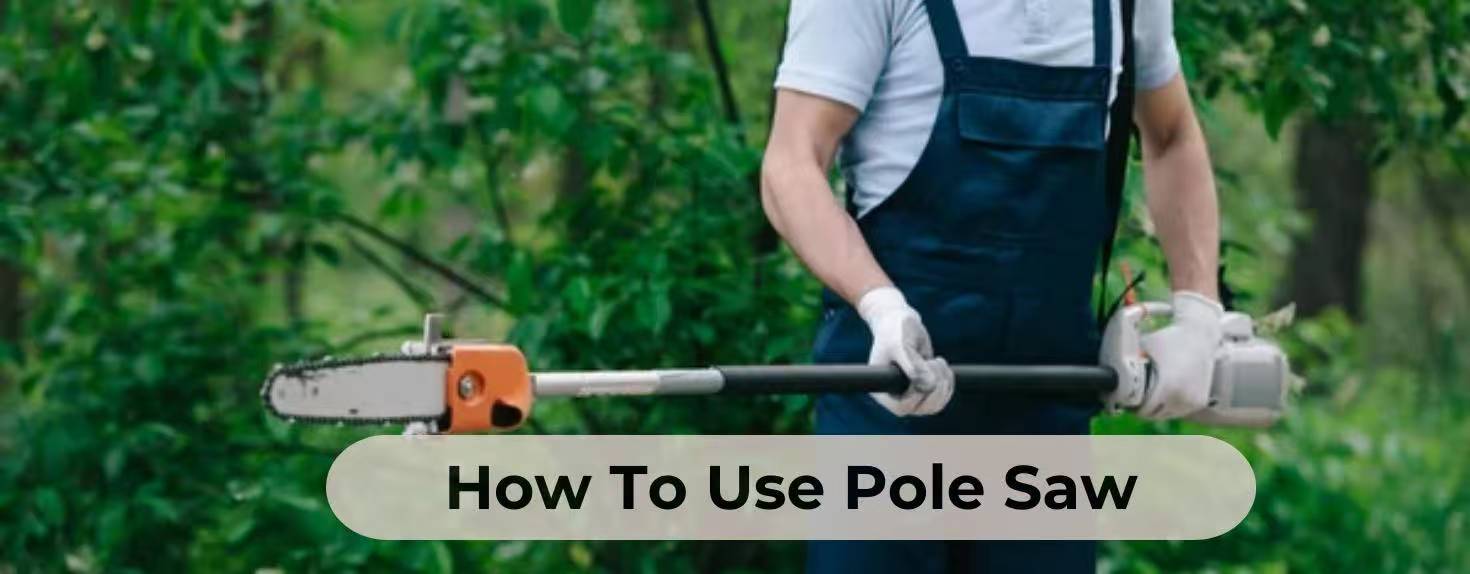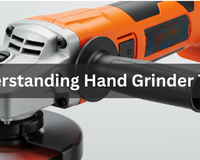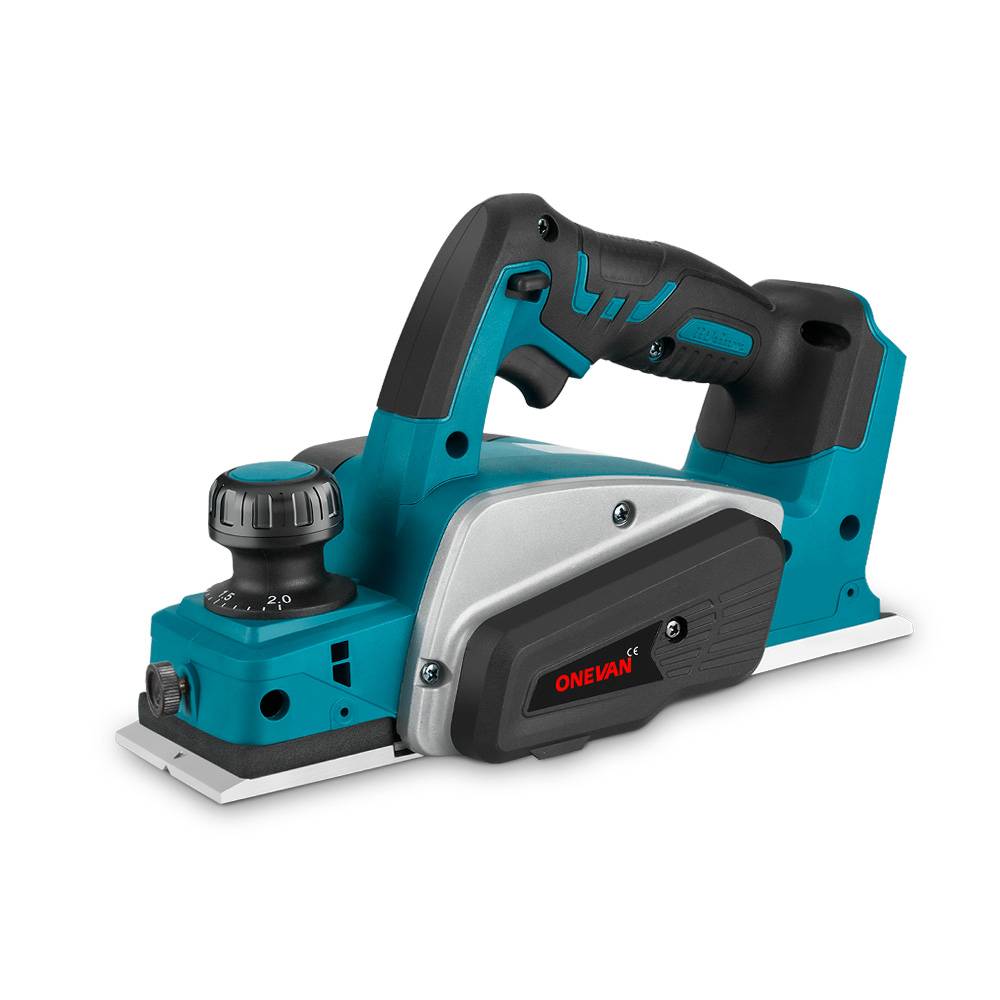A pole saw can typically reach heights of 14-16 feet, allowing you to cut branches that are thicker than those manageable with standard hand pruners. The different models offered: manual pole saws that allow lighter and more precise operations, corded pole electric saws that can perform unlimited work, cordless pole saws that provide maximum mobility, and gas-powered pole saws for heavy operations. There is a solution to every expertise and every style of cutting.
This thorough guide will teach you everything you need to know about pole saw operation, including how to use a pole saw, how to use a pole saw for the first time,whether you can use a pole saw to trim hedges, and how to use a manual pole saw with rope.
1. What is a Pole Saw?
If trees become tall and their branches stretch out way above your head, cutting these can quickly become challenging–and even hazardous–practices. That is where a pole saw comes in handy, providing a safer and more efficient solution for cutting tall branches without having to be swing from ladders or teeter on unstable footing. A multi-purpose tool with reach, precision and cutting power, this plant reshaper is a must-have for gardeners, landscapers and homeowners who consistently want to maintain healthy and neatly trimmed trees. Whether it's cutting down deadwood, opening up sunlight, or just undoing overgrown branches. A pole saw converts what may be a grueling task into manageable tasks.
Definition and Purpose of Pole Saw
A pole saw is a cutting tool that consists of a saw attached to a long, extendable pole, allowing users to trim high branches safely from the ground. It is used to trim off the upper branches without losing footing.
Key benefits:
- Extra Reach: Reach 8 to 16 feet high without a ladder.
- Precision Cutting: Suitable for forming the tree canopy.
- Security: Reduces the risk of climbing-related accidents and helps keep you at a safe distance from falling debris while pruning high branches.
- Efficiency: Larger limbs can be cut smoothly and more quickly than handheld pruners.
When to Use a Pole Saw
You must be wondering what a pole saw is used for. Keep reading to know its uses:
- Pruning: The removal of some small branches to promote good growth.
- Deadwooding: removal of hazardous dead or diseased limbs.
- Crown Reduction: Reducing the height and volume of the tree's crown to improve its shape and health.
- Lifting the Canopy: In situations where there is a need to improve canopy clearance over driveways, walkways or gardens.
- Thinning: Acquirement of more sunlight and air circulation.
Now you must be clear what you use a pole saw for!
A pole saw should be avoided:
- Close to power lines, call your utility company instead.
- When the weather conditions are windy, the falling branches can move in any direction.
- When chopping very thick trunks, the ground-level chainsaw would be more sensible.
Types of Pole Saws
1. Manual Pole Saws
- Probably a hand-powered pole saw design, using either a pruning saw blade or a lopper head with rope for precise cutting.
- It weighs little and is also quiet, so it is easy to carry around, yet there is no disturbance of noise.
- The economical option when you have to do small tasks in your yard, such as trimming.
- Low maintenance- all you need is to keep the blade sharp and clean in order to have an optimum performance..
2. Corded Pole Saws
- Electric-powered ones that were plugged into a socket.
- Deliver unlimited power to cut without batteries recharging.
- And corded, but only in limited measure, since it is eco-friendly and lightweight.
- Fine with compact yards and exposed receptacles.
3. Lithium-ion Pole Saws
- Powered by a Li-Ion battery, to be the most mobile.
- No strings or gasoline--Only plug and play.
- Best suited for residential use or small properties.
- Example: ONEVAN cordless pole saw -lightweight, longer life because of a not-so-heavy brushless motor, and adjustable reach on hard-to-get branches.
4. Gas Pole Saws
- The best form, which fits professional landscapers.
- Farms on heavy jobs with thick branches.
- More weight, more noise, and need to be maintained.
- Optimal in significant areas of property, or you use it often.
How to Choose the Right Type of Pole Saw
Manual vs. Electric vs. Gas
- Take into consideration the level of your experience: as a beginner, you might want to choose a lightweight manual or electric one, whereas an experienced user is liable to operate the heavy-duty saw with gas fuel.
- Consider the weight- the lightest weight is the manual saw, medium weight is the electric saw, and heavy is the gas saws, but with additional cutting power.
- Consider maintenance – manual models only need minimal maintenance, electric models need some care and gas models need frequent check-ups.
- Evaluate your trimming rate- the occasional person could use the manual or electrical corded saws; for heavy-duty duty, I would recommend the electrical cordless or even gas-powered equipment.
- Correspond power to the size of the task- manual chain saws are fine when dealing with small branches, electric chain saws are appropriate for medium branches, and gas chain saws are adequate when it comes to thick or high branches.
- Consider noise and smoke- gas saws are noisier than electric, and both are more exhausting than manual saws.
2. How to Use a Pole Saw
Preparation Before Using a Pole Saw:
Get tools and PPE
- Face or ANSI-rated safety glasses/Safety helmet with visor
- Cut-resistant gloves
- Long-sleeved clothes and sturdy pants
- Safety shoes with steel toes or shoes with gripping (non-slippery)
- Gas or electric-model ear protection
Preparing the Workplace
- Clean out the ground, people, pets, and property around the branch.
- Inspect and look out for unseen risks such as bare wire, wasp nests or uneven ground.
- Arrange the order of pruning of outer branches towards the centre.
Step-by-Step Guide to Using a Pole Saw
Here is a step-by-step guide on how to use a pole saw safely
Step 1: Preparing to start the Pole Saw
Cordless: keep battery charged up; fasten securely.
Corded: Into an outdoor-rated extension cord.
Gas: Prime, inspect the fuel mix, inspect the choke and /or pull the starter.
Manual: No starting required.
Step 2: Holding the Pole Saw in Place
Position yourself slightly away from the tip of the target branch. Have your saw at an angle - do not hold it straight above your head. Have a good position by having both feet on the ground.
Step 3: Cutting in Various Directions using a Pole Saw
-
Pruning
Purpose: Cut off any growth that is not essential in enhancing the health of the tree.
Technique: The first cut should be an undercut made 6-12 inches from the trunk to prevent the branch from tearing. The second cut is then made on the opposite side of the branch, outside the branch collar. -
Trimming
Purpose: Form an aesthetically balanced canopy.
Technique: Cut very slightly and with some control to prevent over-pruning. -
Crown Reduction
Purpose: To shorten or thin out the tree.
Technique: Prune out to lateral branches at least a third of the diameter of the limb cut off. -
Thinning
Purpose: To enhance the circulation of air and light.
Technique: Discard some of the interiors; do not change the form. -
Deadwooding
Purpose: To cut dangerous dead branches.
Technique: A clean and neat cut should be made at the branch collar to exclude decay. -
Lifting the Canopy
Purpose: Provide people, vehicle or view clearance.
Technique: The lower branches can be trimmed off, little by little; never strip off over a quarter of the leaves in one go. -
Pollarding
Purpose: promote thick, tight regrowth.
Technique: Hard pruning to a set height each year.
Best Practices Using a Pole Saw to Cut Efficiently
- Cutting Angle: Ideally, maintain an angle of about 45 degrees to minimize splintering during cuts
- Sectional Cutting: Reduce big branchlets and afterwards remove them.
- Notching (Pre-Cutting): To avoid tearing the bark, undercut first.
- Sequential Cutting: Begin cutting from the top of the branch downwards and work inward towards the center of the canopy..
- Stability: Hold the pole steady and not overreaching.
- Line of Sight: Make sure that the blade and the target are visible.
3. Common Issues When Using a Pole Saw:
Kickback
Issue: Jerk up of the saw tip.
Solution: No tip-cutting: maintain regular pressure.
Cutting Performance
Issue: A blunt chain or tension is not good.
Solution: Adjust the tension, apply chain lube, and adjust the tension.
Limited Reach
Issue: Bush is too high.
Solution: Consider using a telescoping pole saw, such as the ONEVAN 8" Cordless Pole Saw , or consult a professional for assistance.
Chain Slippage
Issue: Chain derailing during cutting.
Solution: Adjust and examine the drive sprocket.
Jamming
Issue: Blade was obstructed halfway through the cut.
Solution: Shut off, clear muck, and go.
Fuel/Battery Problems
Issue: Pole Saw does not start or dies.
Solution: Clean air filter, fill fuel, recharge battery.
4. Conclusion
With this article, you can have an idea of how to use a pole saw and pruner, the different types of pole saws (manual, corded, cordless and gas) and how to select the type of pole saw that suits your needs.
The most important lesson is that it is essential to be safe and prepared. The prevention of accidents involves wearing proper PPE, maintaining a clear work area, and being aware of the tool's limitations. A cordless pole saw, such as a ONEVAN, will be used to its full potential only when properly operated and entrusted to regular repairs.
5. FAQs
What is the best type of pole saw for beginners?
Every first-time user has this query, and with our guide, things have been easier. The lightweight cordless electric pole saw would be a good option for most beginners. The models have the advantage of being easy to operate compared to gas-powered saws, do not make a lot of noise, and require fewer repairs than manual saws. An electric or battery-driven model, such as the ONEVAN cordless pole saw, will provide the cutting capacity required to handle small to medium-sized jobs without being difficult to start (simply charge the battery, plug it in, and you are ready to get to work).
How high can I reach with a pole saw?
Keep in mind that with any reach is the length of your arm and the length you have added to it, the pole, so a 7-foot pole on a 6-foot-tall person can reach into the trees to a height of about 13- 14 feet. Higher: a professional service- long poles can render use of the tool less controllable and unsafe.
Can I use a pole saw for cutting trees?
Depending on limitations, yes. The use of pole saws is most suitable for cutting and trimming branches, rather than large trees. They can be used to take down small trees or saplings with thin trunks (usually less than 6 inches in thickness), although larger trees or bigger trunks should be handled with a full-sized chainsaw on the ground.
How do I sharpen a pole saw blade?
The sharpening process is different based on whether your saw is hand-powered or powered with a chain:
Manual blade: Manually hone a flat file, or a dedicated saw file with fine teeth to sharpen each tooth by file. Go one way only and keep the original angle of the blade. Wipe the blade with a wire brush and deposit sap or debris before sharpening.
Powered chain: A round chainsaw file the exact pitch of the chain you are using (e.g., 3/16" or 5/32"). Lock the pole saw in place, cut at the right angle (usually 25 °- 35 °) with each cutter, and stay straight. Apply lubricant later to reduce the chain's friction and wear.
How often should I maintain or service my pole saw?
The frequency of maintenance depends on usage; however, the following guidelines can help generalize the maintenance schedule:
- Check chain tension and loose bolts before use, and check that safety features are operational.
- Every time: Clean the chain or blade, dust off sawdust and sap and put it away somewhere it will never get wet.
- After every month or after approximately 10 hours of use, perform maintenance such as cleaning and sharpening the blade or chain, greasing moving parts, and checking the pole extension locks.
- Each year, have your gas pole saw serviced by a professional to check the spark plug, carburetor, and fuel lines for optimal performance.
- In the case of electric models, check the battery and electrical connections.
Tags:
how to use a pole saw, pole saw cutting tips, pole saw safety guide, best way to use pole saw, trimming trees with pole saw, pole saw pruning tips, using a pole saw safely, pole saw techniques, tree branch cutting pole saw, pole saw maintenance, pole saw for beginners, pole saw operation guide, pole saw trimming safety, pruning tall branches pole saw, pole saw garden tool tips









